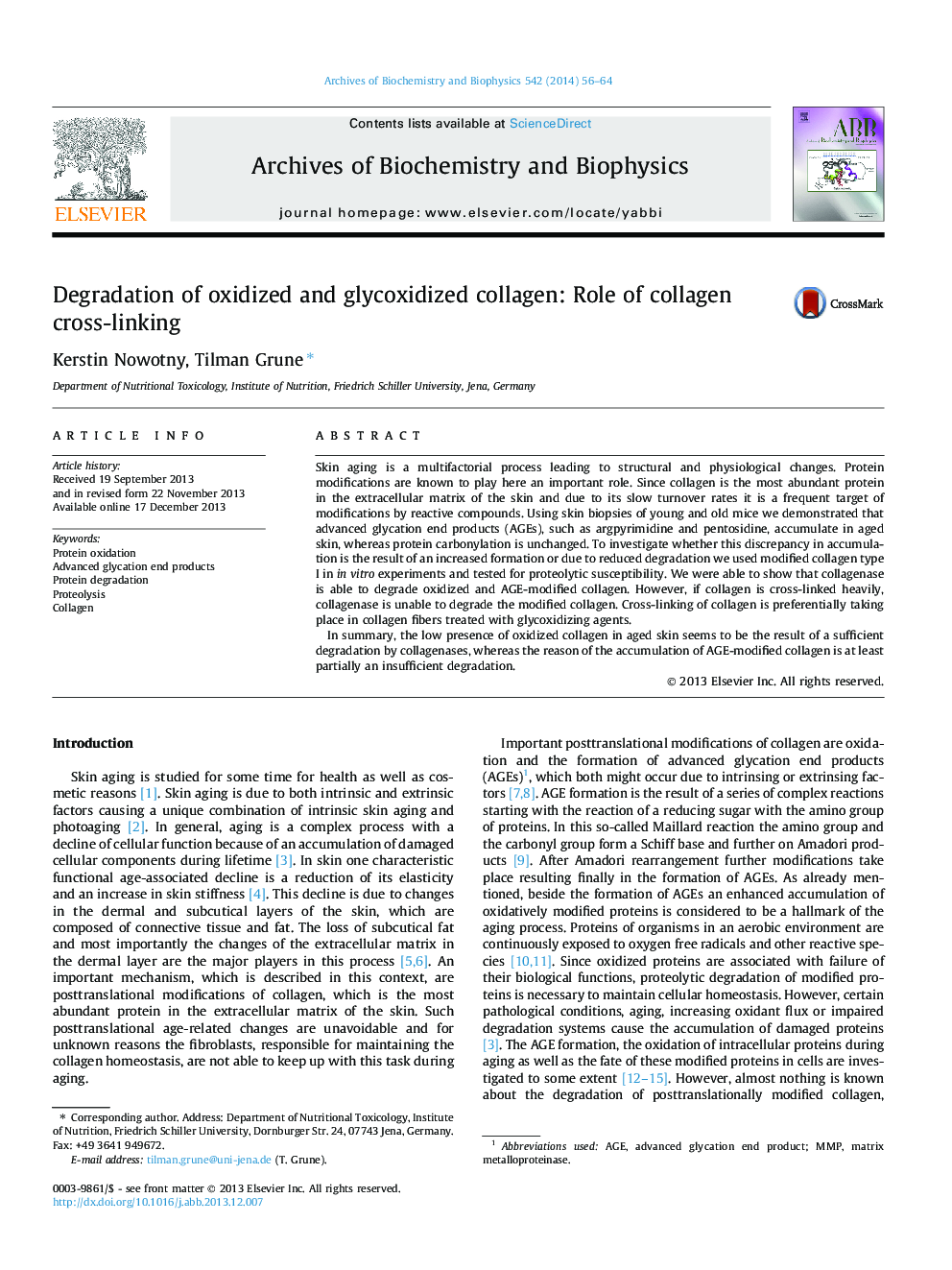| کد مقاله | کد نشریه | سال انتشار | مقاله انگلیسی | نسخه تمام متن |
|---|---|---|---|---|
| 1925276 | 1536357 | 2014 | 9 صفحه PDF | دانلود رایگان |
• Argpyrimidine and pentosidine accumulate in the skin of aged mice, whereas protein carbonylation is unchanged.
• Collagen oxidation promotes collagenase degradation.
• Enzymatic degradation of AGE-modified collagen is reduced.
• Cross-linked collagen fibers are resistant to proteolytic degradation.
Skin aging is a multifactorial process leading to structural and physiological changes. Protein modifications are known to play here an important role. Since collagen is the most abundant protein in the extracellular matrix of the skin and due to its slow turnover rates it is a frequent target of modifications by reactive compounds. Using skin biopsies of young and old mice we demonstrated that advanced glycation end products (AGEs), such as argpyrimidine and pentosidine, accumulate in aged skin, whereas protein carbonylation is unchanged. To investigate whether this discrepancy in accumulation is the result of an increased formation or due to reduced degradation we used modified collagen type I in in vitro experiments and tested for proteolytic susceptibility. We were able to show that collagenase is able to degrade oxidized and AGE-modified collagen. However, if collagen is cross-linked heavily, collagenase is unable to degrade the modified collagen. Cross-linking of collagen is preferentially taking place in collagen fibers treated with glycoxidizing agents.In summary, the low presence of oxidized collagen in aged skin seems to be the result of a sufficient degradation by collagenases, whereas the reason of the accumulation of AGE-modified collagen is at least partially an insufficient degradation.
Journal: Archives of Biochemistry and Biophysics - Volume 542, 15 January 2014, Pages 56–64
